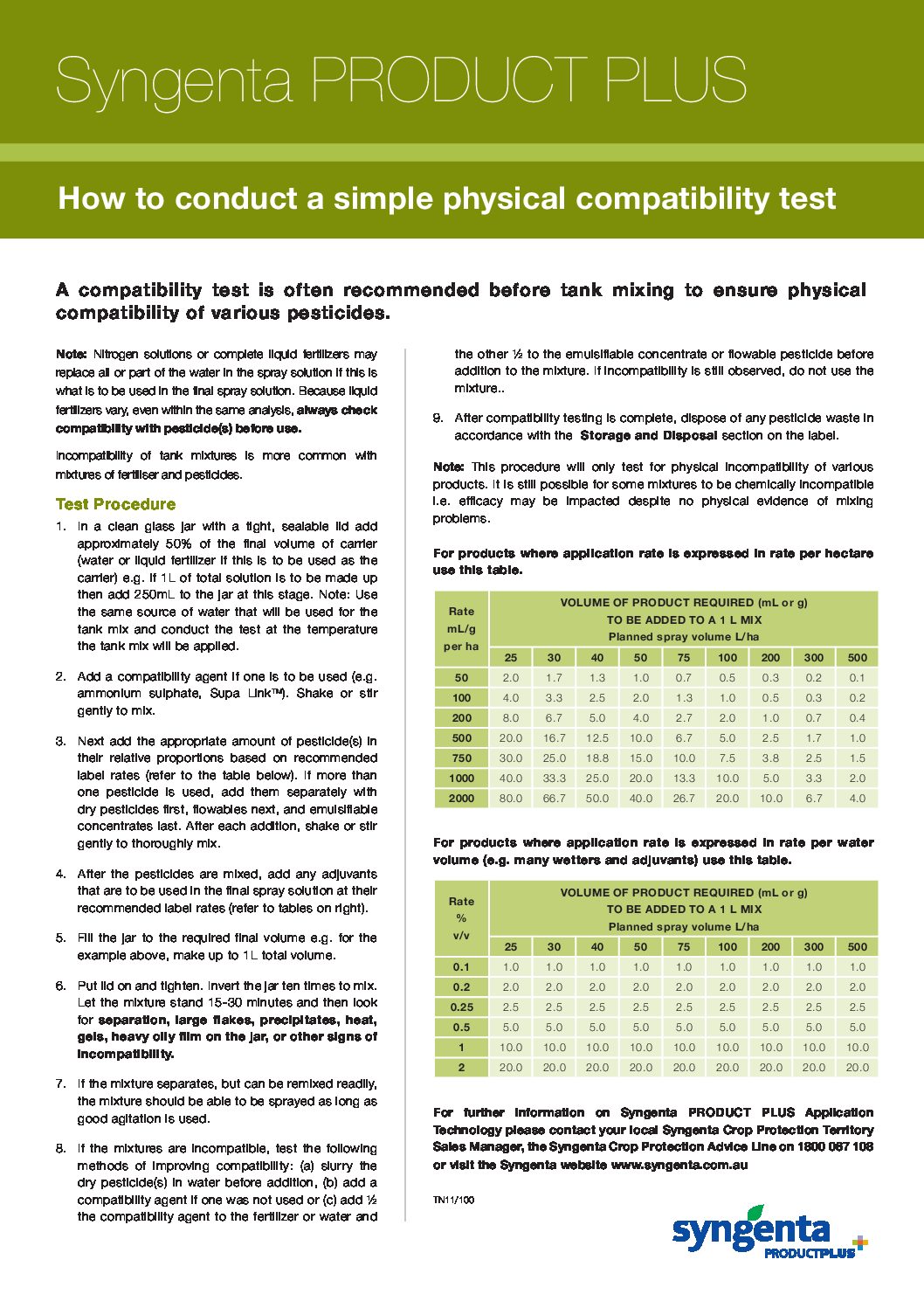
Product Compatibility Test
A compatibility test is often recommended before tank mixing to ensure physical compatibility of various pesticides.
Syngenta Product Plus – How to test procedure for capability of chemicals
Quick & Easy Guide: Mixing Lawn Sprays Safely
Why it matters:
Before you mix pesticides with fertilizers or other chemicals, always check they play nicely together. Even slight changes in fertilizer formulas can cause messy reactions or reduce effectiveness.
Step-by-Step Compatibility Test
-
Grab a clean jar (approximately 1 L capacity with a tight lid or large measuring jug).
-
Add half the final mix volume (e.g. 250 mL water or liquid fertiliser, using the same water you’ll use in the spray and at the spray temp)
-
Stir in any compatibility agent – if you’re using one. Mix gently.
-
Add your pesticide(s):
-
Use label dose rates, scaled for 1 L.
-
Sequence: Dry powders first → then flowables → lastly emulsifiable concentrates. Mix after each addition
-
-
Add any spray adjuvants (based on manufacturer’s dosage) and stir.
-
Fill up to the final volume (e.g. 1 L total), secure the lid, then gently invert the jar 10 times or mix for approximately 30 seconds.
-
Let it sit for 15–30 minutes, then check for:
-
Clumps, separation, gelling, warmth or oily films.
-
If it separates but re-mixes easily, it’s OK to spray with continuous agitation.
-
If it stays separated, it’s a no-go.
-
-
Trouble mixing? Try these fixes:
-
Pre-mix dry pesticides in water.
-
Add or split a compatibility agent between water and pesticide.
-
If incompatibility persists, do not use the mix.
-
-
Dispose of leftovers responsibly following the product’s disposal instructions
This simple jar-test helps you avoid mixing disasters—protecting your lawn or garden while preserving the effectiveness of your chemicals. Think of it like a “taste test” for your spray before it hits your lawn!
